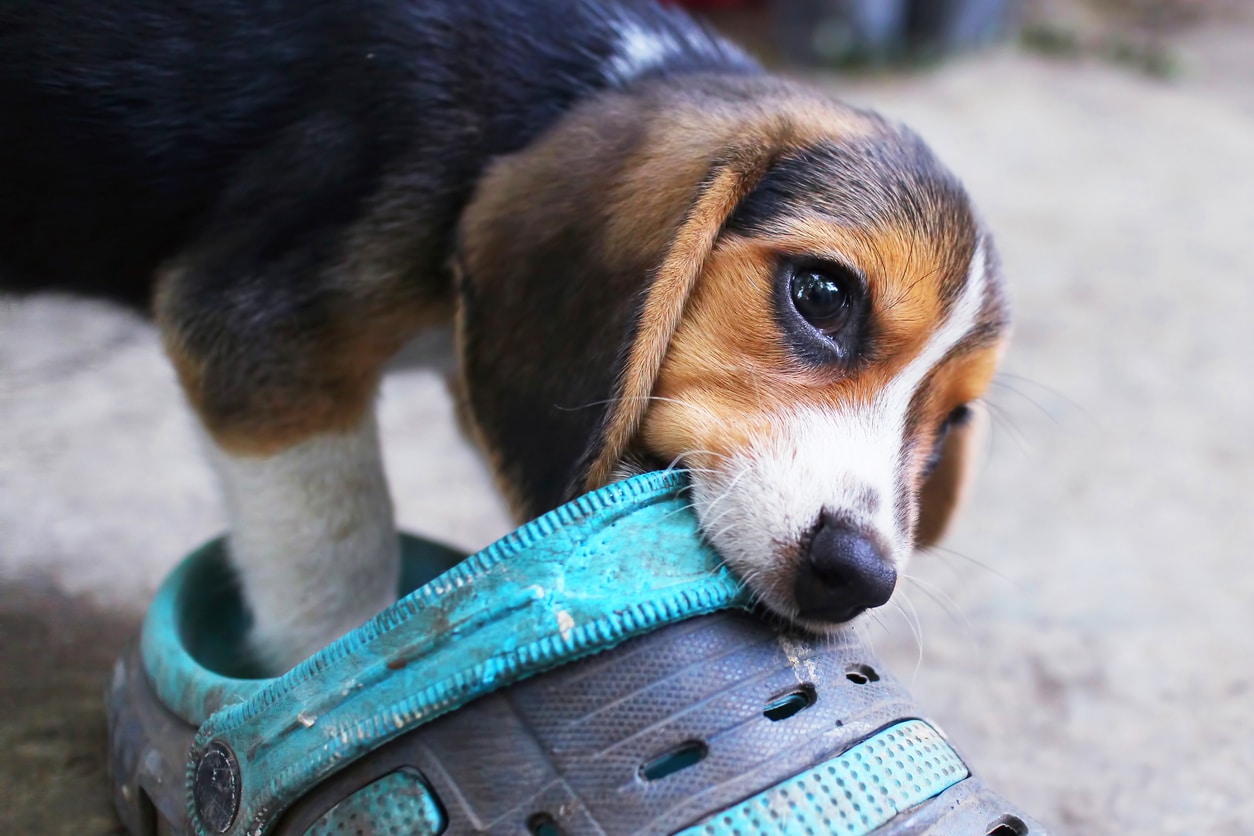Dogs are known for their playful and curious nature, but sometimes this can lead to unwanted chewing on household items. Whether it’s a pair of shoes, the furniture, or even the power cords, this behavior can be frustrating. Fortunately, with a bit of management and consistency, you can guide your dog towards more appropriate chewing habits. Here’s a guide to help you manage and redirect your dog’s chewing.
Understanding the Root Cause
First it is important to consider why dogs chew and what your dog needs to help manage this behavior appropriately. Chewing is a natural behavior for dogs, and several factors might influence their chewing habits:
Teething: Puppies go through a teething phase that can be uncomfortable. So be extra patient with your puppy; chewing helps soothe their gums when they have teeth growing in.
Boredom: Dogs that lack mental and physical stimulation often resort to chewing to entertain themselves. When actively chewing on something, your dog’s body releases oxytocin in their brain. This is a hormone that helps the dog feel happy and calm.
Anxiety: Chewing can be a coping mechanism for dogs experiencing separation anxiety or stress. Again, consider the physiological effect it has on your dog. If they feel stressed, it is only natural for them to turn to a behavior that releases “feel good” hormones.
Exploration: Dogs explore their environment with their mouths, especially when they’re young and curious. Some dogs may be mouthier than others. It is up to us to set them up for success and manage their environment appropriately.
Strategies to Manage and Redirect Chewing
Provide Appropriate Chew Toys: Invest in a variety of chew toys that are durable and interesting to your dog. Rubber toys, rope toys, and treat-dispensing toys can keep your dog engaged and provide a satisfying alternative to household items. Make sure the toys are the right size and type for your dog’s chewing strength and preferences.
Use Positive Reinforcement: Whenever you catch your dog chewing on their toys instead of your belongings, reward them with praise or treats. Positive reinforcement helps your dog associate chewing on the right things with good outcomes. For instance, if you see your dog chewing on a toy, start playing with them or reward them with a treat. It is not uncommon for people to accidently ignore our dogs for chewing on the right items, then give them reinforcement for chewing on the wrong items. You chasing them around for the remote is an awfully fun game! Try to reflect on how your reactions may influence your dog’s behavior.
Redirect and Supervise: Supervision is important, especially for puppies or newly adopted dogs. When you catch your dog chewing on something they shouldn’t, calmly redirect them to an appropriate chew toy. You can also cue them away from the object with a command and remove what they should not have been chewing on. Consistency is important—redirect them every time they start chewing on something inappropriate.
Create a Safe Chewing Environment: Dog-proof your home by keeping valuable or hazardous items out of reach. Use baby gates or playpens to limit your dog’s access to certain areas of the house. You can also use deterrent sprays on furniture and cords to make them less appetizing to chew. Always have at least once chew available for your dog, especially heavy chewers. Dogs can get bored of having the same chew available, so cycle between different chews daily.
Provide Mental and Physical Stimulation: Boredom can lead to destructive chewing. Incorporate games, treat-dispensing toys, and training exercises into your dog’s daily routine. Engaging your dog’s mind can reduce the likelihood of them seeking out other things to chew. Also ensure your dog is getting the appropriate amount of physical exercise. Sometimes going for a long walk is not enough. Your pup may need to run or go for a swim. Try different physical exercises with your dog and see which they enjoy the most. It is important to exercise your dog both mentally and physically throughout the day.
Train Basic Commands: Training your dog basic commands like “Leave It,” or “Drop It,” can be helpful in managing their chewing habits. These commands help you control your dog’s actions and can be especially useful if you catch them in the act of chewing something they shouldn’t. However, it is easy to over use these commands. Asking a dog to drop something that is valuable to them and then taking it away can diminish their reliability in listening to the command. So, ensure you practice “Leave It” and/or “Drop It” enough that they actually enjoy following through with doing these behaviors for you.
Conclusion
Chewing is a natural part of a dog’s behavior, but with patience and consistency, you can help your pup learn to focus their chewing on appropriate items. By providing suitable toys, ensuring ample exercise, and using positive reinforcement at the right times, your dog won’t be so destructive. With time and effort, your dog will learn to chew on the right things, leaving your household items safe and sound!

